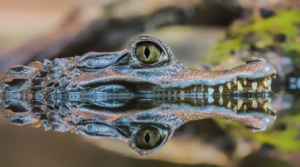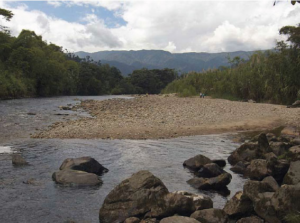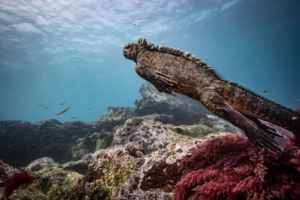Unveiling the Wonders of Galapagos Archipelago
Introduction
The Galapagos Islands, hailed as one of the seven underwater wonders globally, boast two jewels in their crown – Darwin and Wolf Islands. Nestled in the Galapagos archipelago, these islands offer an unparalleled diving experience, showcasing a diverse array of marine life. From dolphins and sharks to whales and exotic fish, coupled with avian wonders like the Galapagos penguin, sparrow hawk, and blue-footed boobies, these islands are a haven for nature enthusiasts.
Galapagos: A Recognised Natural Marvel
Renowned nationally and internationally, the Galapagos Islands underwent a remarkable transformation from a World Heritage Site in peril to a UNESCO-acknowledged heritage site. In August 2016, during the third World Conference on Marine Heritage, these islands earned recognition as a true scientific laboratory, solidifying their status as the best-preserved natural areas globally.
Darwin and Wolf Islands: The Ecological Marvels
Situated northwest of the Galapagos Islands, Darwin and Wolf Islands, also known as Wenman and Culpepper, are eroded volcanoes boasting unique ecological significance. A scientific study by the Charles Darwin Foundation identified them as a single ecological unit, harbouring the highest shark biomass globally, averaging 17.5 tonnes per hectare. Declared a Marine Sanctuary by the Ecuadorian government, these islands play a pivotal role in the conservation of the planet.
Diving into the Depths: A Unique Underwater Experience
Rich Marine Biodiversity
The waters surrounding Darwin and Wolf Islands are teeming with an abundance of shark species, including Scalloped Hammerhead, Galapagos Shark, White-tip and Black-tip Reef Sharks, Dusky and Silky Sharks. This area hosts the only migration of whale sharks in gestation, adding to its ecological importance. Notably, few dive sites globally offer such a concentration and diversity of sharks.
Beyond Sharks: A Marine Extravaganza
Apart from sharks, these islands are a haven for marine life enthusiasts. Large manta rays, golden rays, eagle rays, and stingrays make regular appearances. The vibrant underwater world also includes tropical reef fish like sailfish, barracuda, scorpionfish, hogfish, parrotfish, and trumpetfish. Rare sightings, such as the red-lipped batfish, add to the allure.
Avian Spectacle
Above the surface, the islands host a spectacular array of seabirds, including Nazca booby, red-footed booby, swallow-tailed gull, and sooty tern. The Vampire Finch and Darwin’s Nightingale are among the rare land birds that find refuge here.
Darwin Island: A Geological Marvel
Origin and Formation
Darwin Island, originally named after English naturalist Lord Culpepper, is the northernmost island in the Galapagos archipelago. An extinct volcano, it emerged from the ocean between 400,000 and 1.6 million years ago. The island is home to Darwin’s Arch, a legendary diving spot known for its strong currents, offering a thrilling experience for divers.
Wolf Island: The Enigmatic Dive Destination
Unique Landscape
Wolf Island, another extinct underwater volcano, lacks landing sites but compensates with spectacular dive sites. Surrounded by volcanic platforms, cliffs, and underwater caves, Wolf Island offers an enticing landscape for divers. Notably, the island’s dry climate is home to the ingenious Vampire Finch, adapting to survive by feeding on the blood of larger seabirds.
Dive Sites
Dive enthusiasts can explore various sites, including Shark Bay, the slip (The landslide), the pinnacle, North Islet (The banana), the elephant, and the Anchorage, each offering a unique underwater adventure.
Choosing the Right Time for a Dive Expedition
Seasons and Wildlife
There’s no ‘best’ or ‘worst’ time to visit Darwin and Wolf Islands, but the weather plays a crucial role in planning. The cool and dry season from June to November witnesses the dominance of the Humboldt Current, attracting whale sharks and smaller shark species. However, the colder waters and stronger currents make diving more challenging.
Ideal Months
For a more pleasant diving experience, choose the warm and humid months from January to May. During this period, the water temperature is comfortable, and the currents are more manageable, offering a chance to witness hammerhead sharks and manta rays in their natural habitat.
Planning Your Dive Adventure
Dive Cruise Experience
To explore these islands, embark on a dive cruise with specialised dive yachts like the Calipso. These vessels offer dedicated Galapagos dive itineraries to Darwin and Wolf, equipped with all necessary diving gear and accompanied by a knowledgeable naturalist dive guide.
Conservation Measures
It’s essential to note that the protection zone around these islands strictly prohibits fishing and other extractive activities. Only uses established in the Galapagos Islands zoning system are allowed, reflecting Ecuador’s commitment to environmental conservation.
In conclusion, Darwin and Wolf Islands stand as not just geological marvels but as thriving ecosystems brimming with diverse marine and avian life. Embark on a dive expedition to these underwater wonders and witness nature’s spectacle beneath the waves.

Charles Darwin Fundation (s,f)



